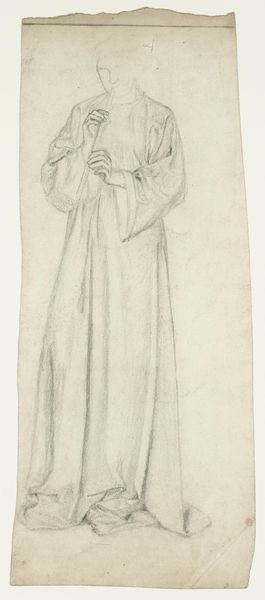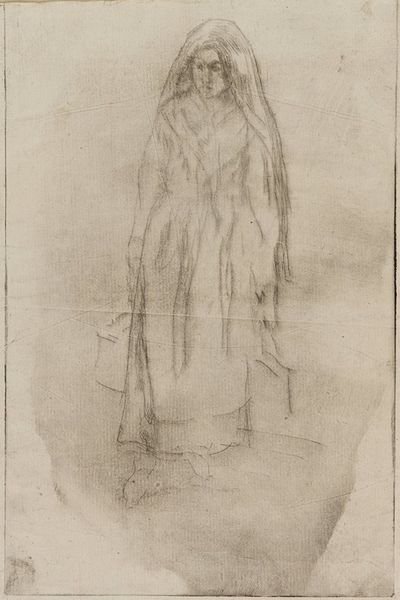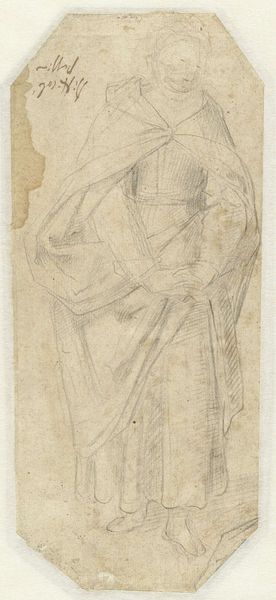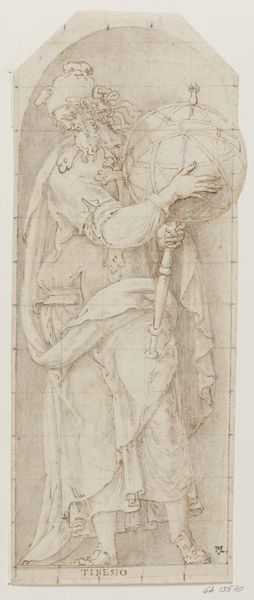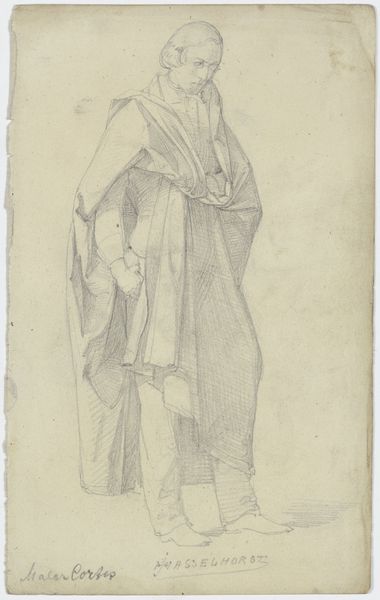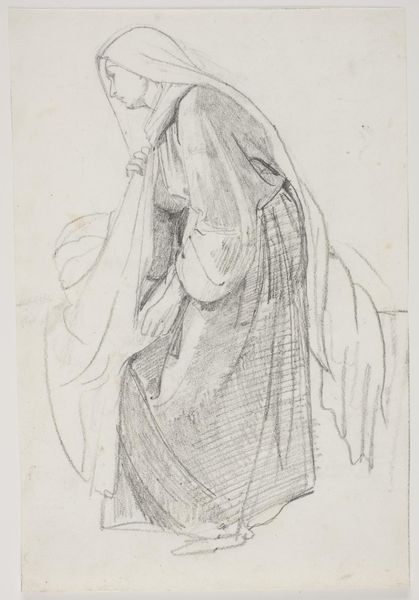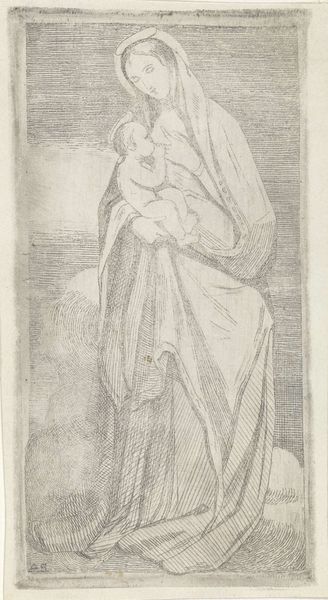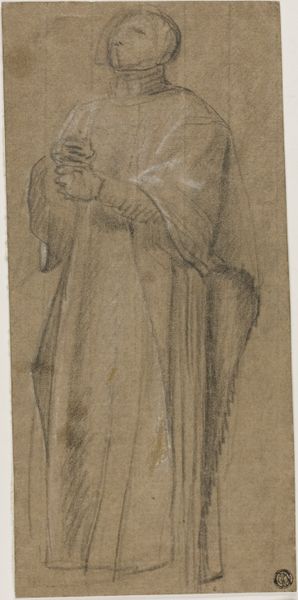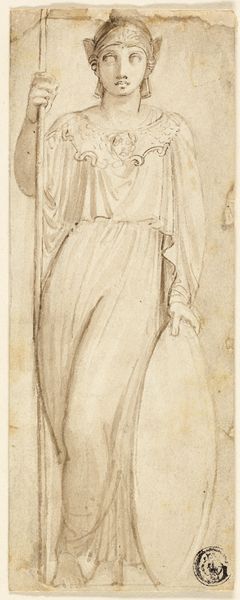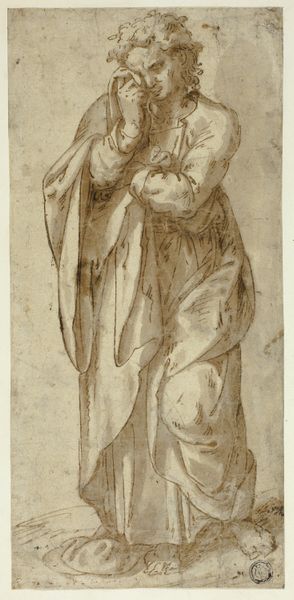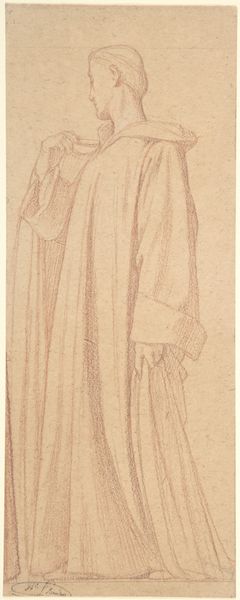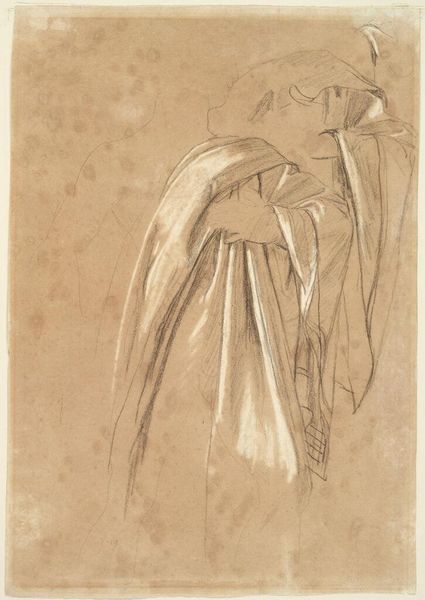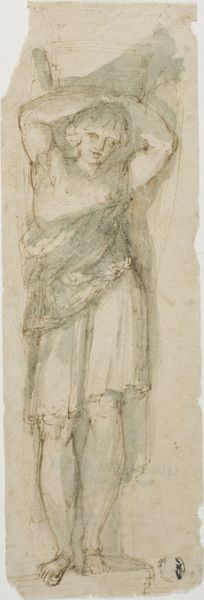
Dimensions: support: 387 x 190 mm
Copyright: CC-BY-NC-ND 4.0 DEED, Photo: Tate
Curator: Here we have William Morris’s pencil drawing, "An Angel with a Harp," part of the Tate Collection. I see an ethereal figure, rendered with soft, flowing lines. Editor: It feels unfinished, almost like a ghost. It evokes a sense of quiet contemplation. What can you tell me about the symbolism here? Curator: Well, angels, particularly with harps, often represent divine harmony and messengers of God. Morris, deeply influenced by medievalism, frequently incorporated such figures, harkening back to a pre-industrial, idealized past. Editor: So, an embrace of faith but also a rejection of the present? It's interesting to consider this in the context of the social upheavals of his time. Curator: Precisely. The angel becomes a symbol of hope, a reminder of spiritual ideals amidst societal change. Editor: Yes, a subtle rebellion, perhaps. I see it now. Curator: It's an image steeped in yearning, a visual echo of faith and social critique. Editor: Indeed. Thank you for pointing out the deeper symbolic layers.
